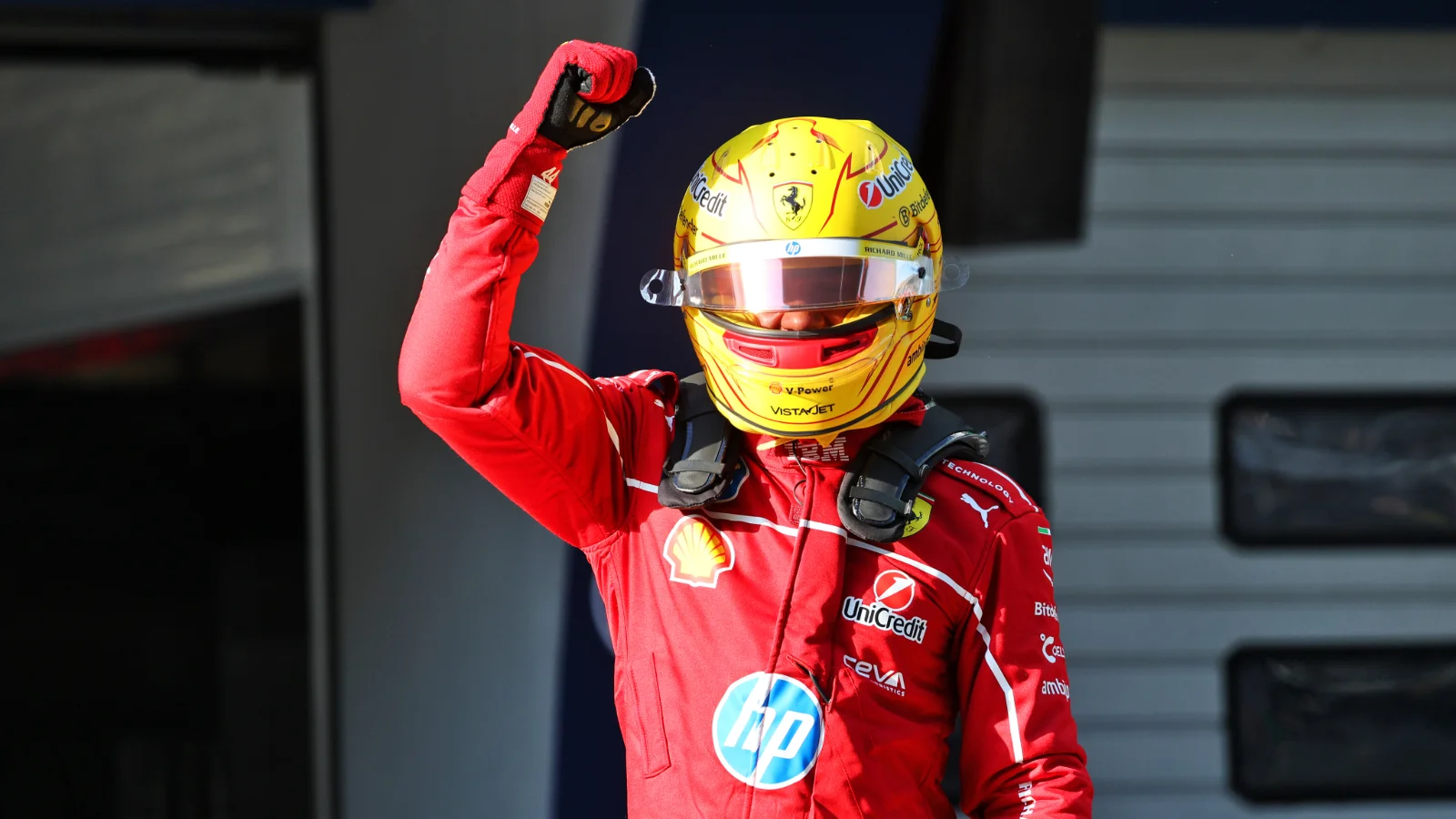
ANALYSIS: Hamilton claims first Ferrari pole in thrilling Chinese Sprint Qualifying
Shanghai International Circuit, China -- Lewis Hamilton has secured his first pole position for Ferrari, edging out Max Verstappen by just 0.018s in a dramatic Sprint Qualifying session. Oscar Piastri delivered a stunning performance to take third, only 0.080s off pole, as three teams battled at the front in one of the closest qualifying sessions in recent years.
This pole marks a historic milestone for Hamilton, his first since leaving Mercedes. "It's something truly special," Hamilton said, praising Ferrari's work to help him adapt to the SF-25. The significance of this moment cannot be overstated: a Ferrari pole in China, achieved by one of the sport's greatest, signals that the Hamilton-Ferrari era is truly underway.
Session Highlights: A Fight to the Last Lap
The qualifying session was a tense shootout, with six drivers within four-tenths of Hamilton's pole time. Verstappen looked set to claim P1 before Hamilton's final lap snatched pole in the dying seconds. McLaren's Oscar Piastri starred, showing pace in Sector 3, while his teammate Lando Norris struggled to extract the same speed, finishing P6. Charles Leclerc had moments of brilliance but lacked Hamilton's sharpness in braking zones, settling for P4.
The track dominance map shows Hamilton's strength in the tighter corners, where Ferrari's braking stability shone. Verstappen's top speed on straights was superior, but Hamilton clawed back time under braking, particularly at Turn 14. Piastri, meanwhile, excelled in high-speed corners, keeping him in the mix.
Telemetry Insights: Where Hamilton Gained the Edge
To understand how Hamilton beat out Verstappen and Piastri, we turn to the telemetry data -- the detailed traces of speed, gear changes, throttle and braking that each driver logged on their fastest laps. The data paints a fascinating picture of differing driving styles and car strengths. Hamilton's advantage came in the corners, where he maximized the Ferrari's strong front end and braking stability. He was consistently later on the brakes and carried more speed into the bends, compared to his rivals. For example, into the tight Turn 6 hairpin, Hamilton braked a few meters later than both Verstappen and Piastri, yet managed to hit the apex perfectly. By contrast, Verstappen and Piastri were a tad more conservative on the brakes there, ensuring they didn't lock up but giving away a sliver of time to Hamilton. Through the winding middle-sector esses, Hamilton's steering inputs were smooth and he kept a higher minimum speed, which is reflected by his slightly higher apex speeds relative to the others. These tiny advantages through multiple corners added up to the tenth he gained in Sector 2.
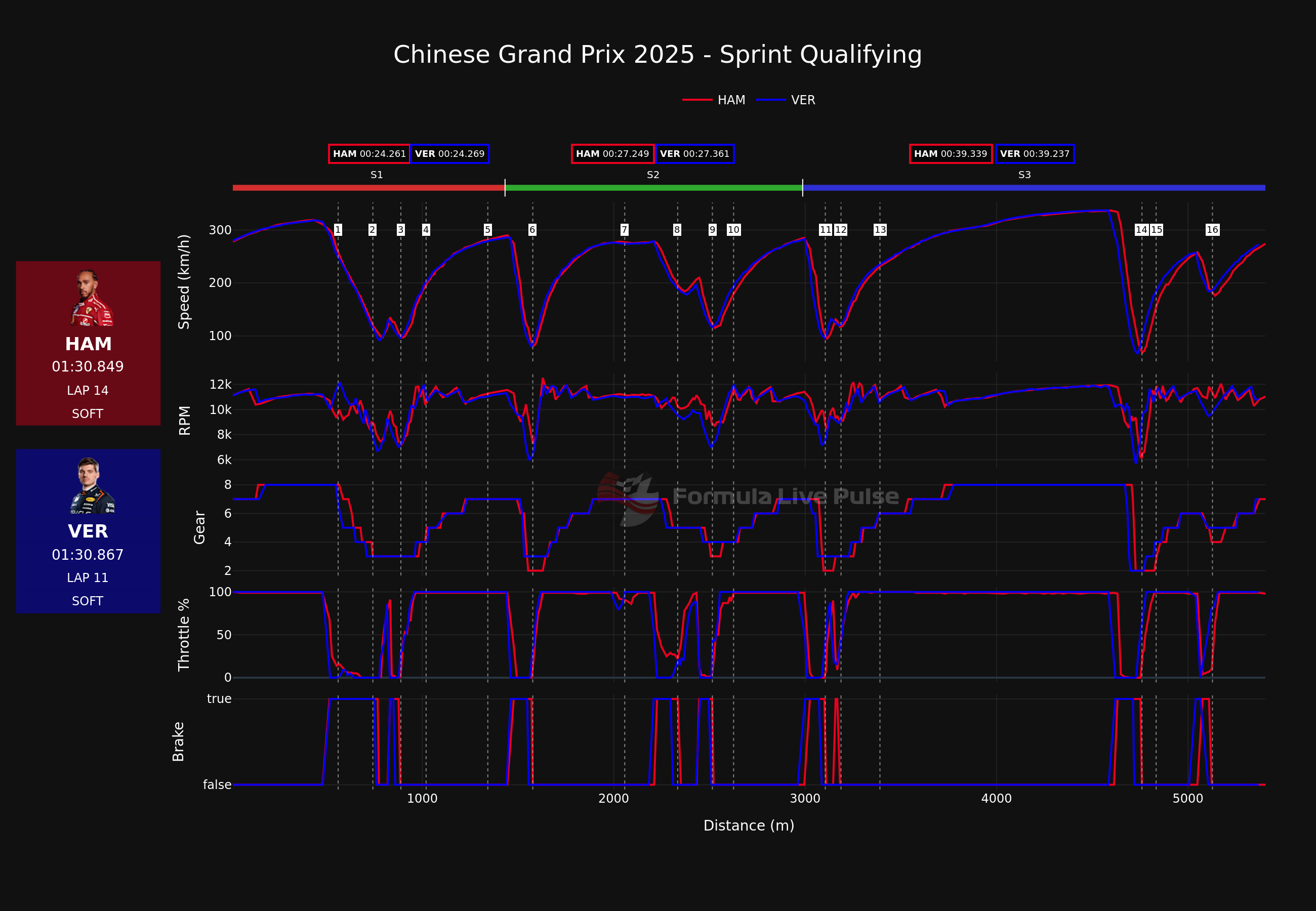
Comparing telemetry -- Hamilton vs. Piastri: The overlaid telemetry traces of Hamilton (red) and Piastri (orange) reveal how Hamilton eked out a time advantage in specific areas of the lap. In the speed graph (top), Hamilton's red line stays just above Piastri's orange line at key points -- notably in the high-speed Turn 1/2 complex and entering Turn 6 -- indicating he carried a few km/h more speed through those sections. The throttle traces (bottom) highlight Hamilton's skill in getting back on the power early: for instance, out of Turn 3 and Turn 10, the red line (Hamilton) hits 100% throttle slightly sooner than the orange line, meaning Hamilton was accelerating away earlier. That gave him better drive onto the following straights. Meanwhile, the brake indicators show both were incredibly strong on the brakes, but Hamilton tended to trail-brake just a hair longer into the corners, helping rotate the Ferrari without losing speed. It's a delicate balance -- brake too late and you overshoot; Hamilton nailed it on this lap.
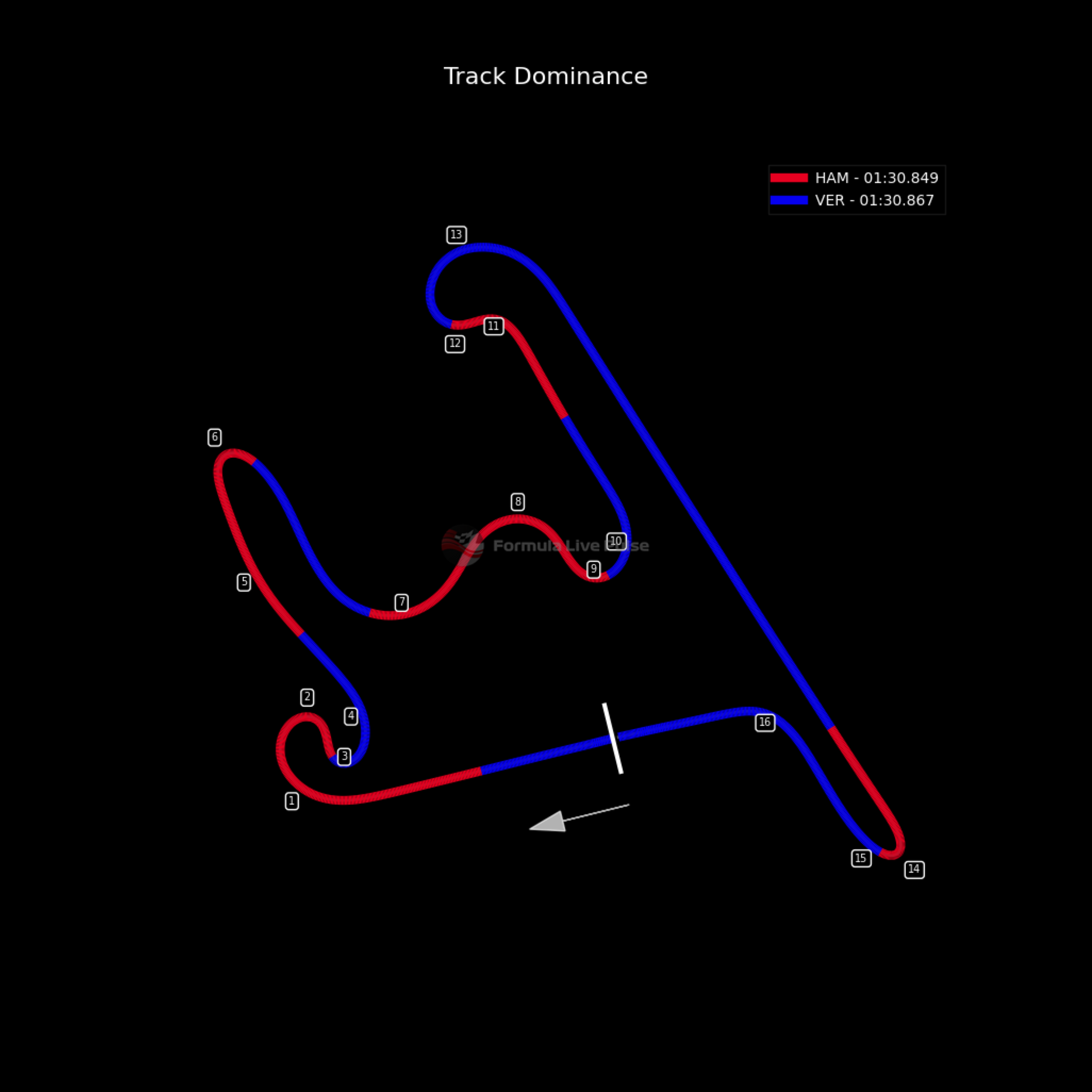
One striking difference in driving style seen in the telemetry is gear usage. Hamilton often used a lower gear in slow corners compared to his rivals. In Turn 6, for example, Hamilton stayed in 2nd gear whereas Piastri in 3rd. Using a lower gear can cause wheelspin, but Hamilton leveraged his experience to get a clean exit. In essence, Hamilton's smooth, no-drama style -- using gentle decisive throttle application -- paid dividends in keeping the Ferrari balanced and quick out of corners.
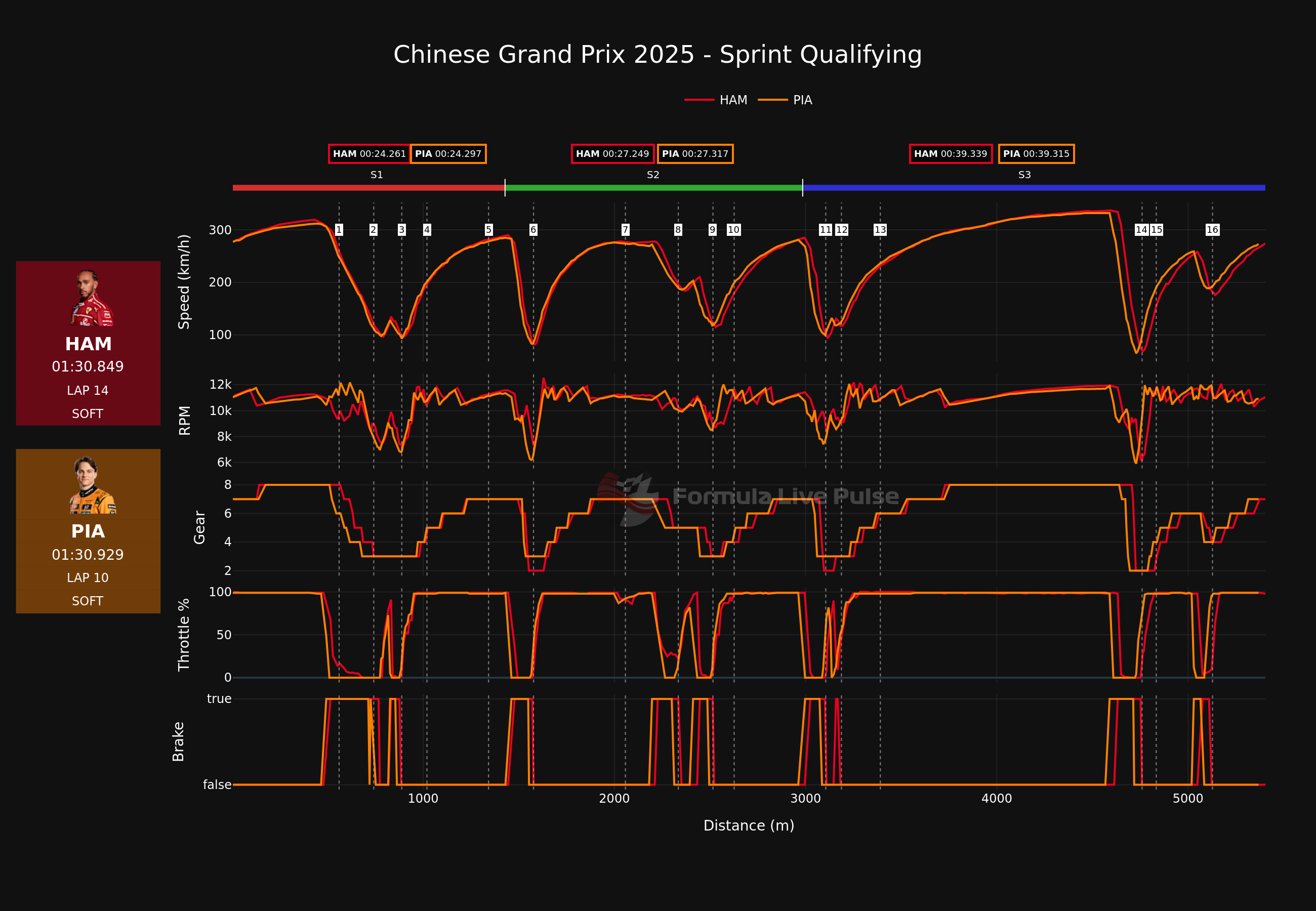
When it came to outright speed, Verstappen's Red Bull was the fastest in a straight line. The telemetry shows Verstappen peaking at a slightly higher top speed on the long back straight -- roughly 2-3 km/h faster than Hamilton's Ferrari. Red Bull's low-drag design and powerful Honda engine (now badged as Ford in 2025) gave Verstappen an edge in Sector 3, where he set the fastest time of all. However, Hamilton clawed back time under braking at the end of that straight. Into the Turn 14 hairpin, Hamilton was able to brake later and still hit the apex, whereas Verstappen braked just a touch earlier to be safe. That late braking maneuver by Hamilton, combined with a strong launch out of the hairpin, nullified most of Verstappen's straight-line advantage. In Piastri's case, the McLaren wasn't quite as rapid on the straight, but Piastri made up for it by carrying impressive speed through the flowing Turn 12-13 complex. Telemetry shows Piastri at full throttle slightly earlier through Turn 13, which helped him gain time on Hamilton in that section. In fact, Piastri's sector 3 time was quicker than Hamilton's by about 0.024s, showing the benefit of his approach and the McLaren's strength in high-speed stability.
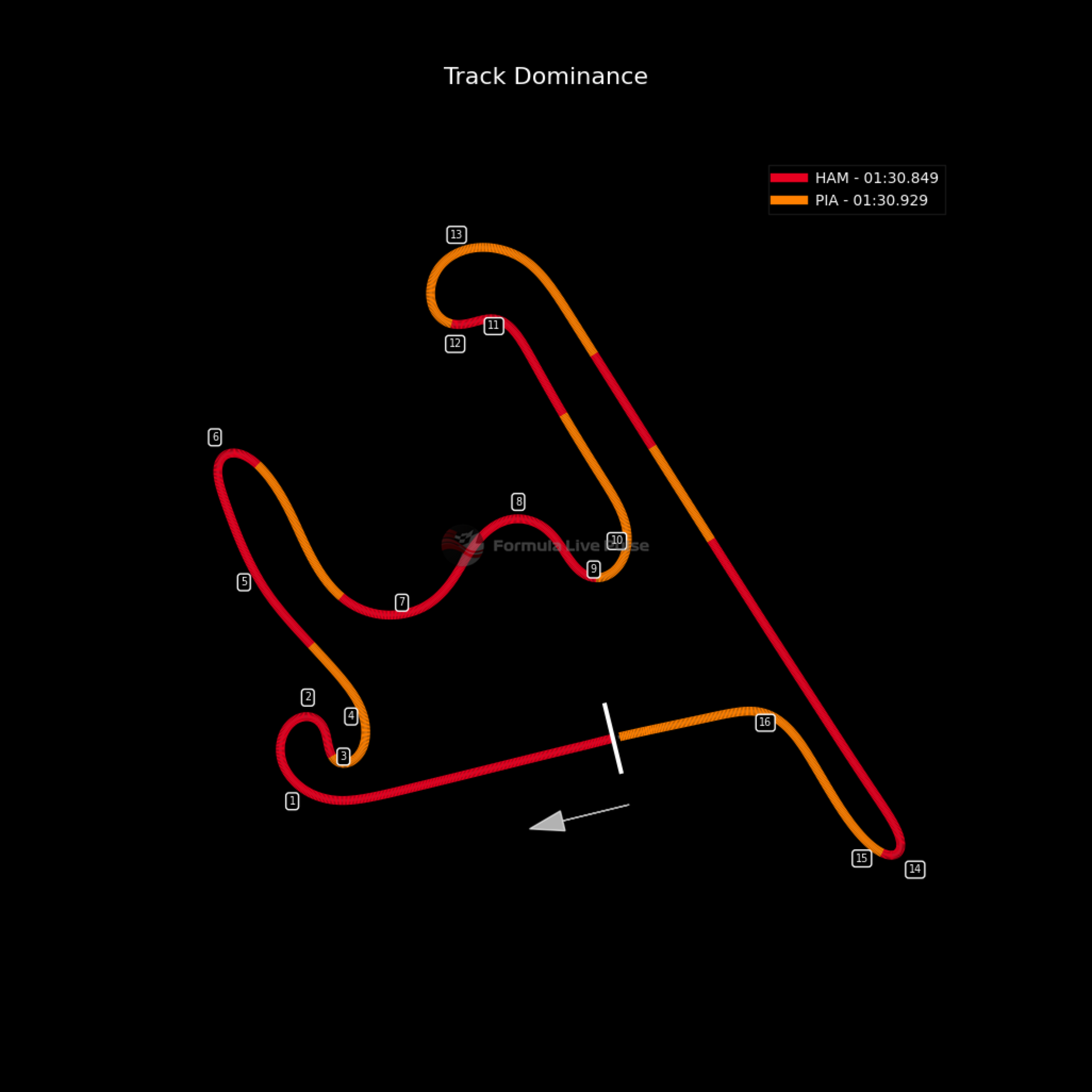
Even the intra-team battle at Ferrari is illuminated by the data. Charles Leclerc's lap, while good, lacked the final sharpness of Hamilton's. Leclerc was slower in nearly every corner compared to Hamilton -- just a few km/h down here and there -- which accumulated to a couple tenths deficit. The telemetry indicates Leclerc wasn't braking quite as deep; for instance, at Turn 9 Leclerc lifted off and hit the brakes slightly earlier than Hamilton did, costing him exit speed onto the short straight that follows. Interestingly, Leclerc was actually faster than Hamilton through the ultra-fast Turns 12 and 13, carrying more speed in that daring section. The track dominance map confirms Leclerc had the edge in that specific segment of the circuit. But those gains were marginal, and Hamilton's time loss there was minimal. Essentially, Hamilton outperformed his teammate in the areas that mattered most -- the heavy braking zones and acceleration out of slow corners -- showcasing why he ended up on pole. For new fans, this illustrates that qualifying isn't just about who has the fastest car in a straight line; it's also about driver finesse in the tricky bits of the track.
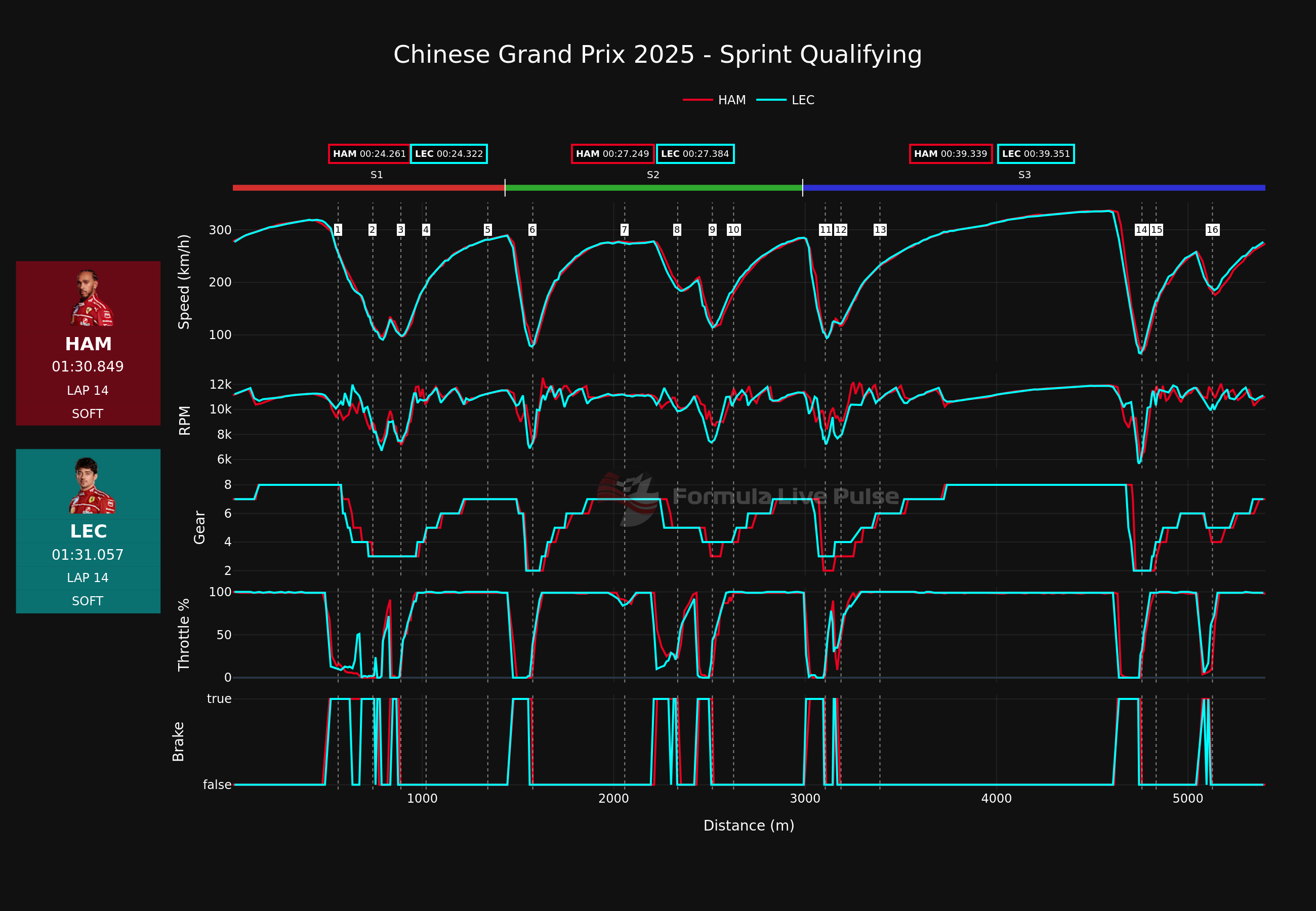
Strategy Calls: One-Lap vs. Two-Lap Gambles
Ferrari's one-lap flyer strategy worked perfectly for Hamilton -- a single push lap on fresh softs. McLaren opted for a two-lap approach, allowing Piastri to build up tire temp but slightly degrading grip by his final lap. This nearly worked, as he set the fastest final sector.
Red Bull split the difference, with Verstappen going for a single-lap attack, but possibly missing peak tire temps in Sector 1.
Had Norris executed his two-lap plan better, he might have been higher than P6. Leclerc, too, might regret not pushing harder on his out-lap to warm his tires better. These small strategic differences shaped the final order.
What to Expect in the Sprint Race
-
Hamilton vs. Verstappen into Turn 1: The long straight gives Verstappen a shot at stealing the lead at the start.
-
Piastri is the wildcard: His McLaren is strong in Sector 3 and might challenge if he gets a slipstream.
-
Leclerc, Norris and Mercedes on the charge: They'll look to capitalize on any front-row mistakes.
-
Tire wear could decide it: Ferrari's softs need to last 17 laps -- if they degrade, Verstappen might pounce.
Hamilton's first Ferrari pole is a huge statement, but keeping Verstappen behind in the Sprint's opening laps will be a serious test. If Shanghai's qualifying was this close, expect fireworks in the race.
Will Hamilton convert this into Sprint victory? Or will Verstappen's straight-line speed be too much to contain? The answer awaits as F1's new era of ultra-tight competition continues.
